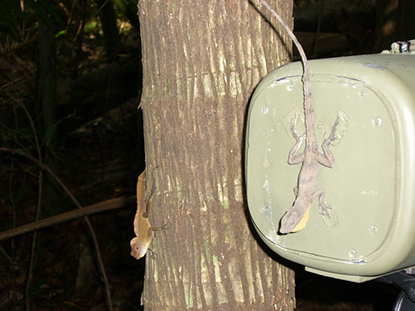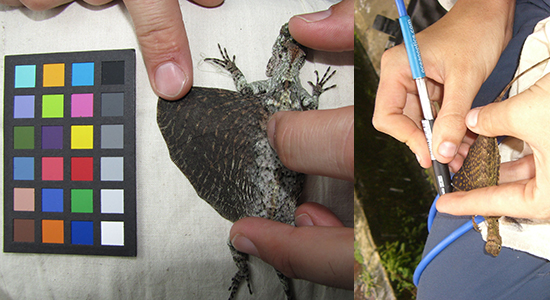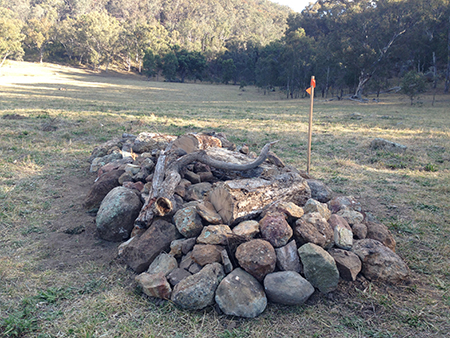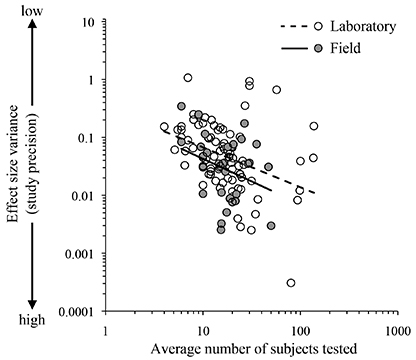Ord Lab Behaviour and Evolution UNSW | Sydney, Australia
| | Techniques | |
Much of our work takes a broad macroevolutionary perspective and involves integrating field collected data, phylogeny, and an increasing array of new, highly sophisticated statistical models for studying evolutionary processes.

Historic reconstruction of the origins of amphibious behaviour in blenny fishes

A Puerto Rican anole confronts a robotic rival
It sounds like a gimmick, but building robotic animals offers a powerful means of conducting manipulative experiments in the wild with free-living animals. We have a range of skills in electronics, programming and the manufacturing of robots to test questions relating to why animal signals take the form they do, what options might exist for different signal forms that don’t currently occur in nature, and how animal motion displays are used in social communication and predation.
Quantitatively measuring behaviour and animal ornaments in a biologically meaningful way can be difficult. We use computational motional analysis and motion perception to study how animal movement is used in communication and other activities, as well as colour spectral analysis and modelling of animal colour vision to reveal how receivers shape the evolution of elaborate animal ornamentation.


Experimental rock island embedded in a grassland matrix
We maintain a longterm field experiment in which small habitat islands have been established in a grassland matrix to study how invertebrates, lizards and snakes colonise new areas, how colonisation order and the functional role of different species shapes the structure of ecological communities, and how community composition and isolation influences the resilience of communities to environmental disturbances.
Big data available in online databases and “small” data reported in the published literature offers a rich resource that can be leveraged to investigate a host of questions. We use both traditional meta-analysis techniques of computing effect sizes and compiling raw data directly from published literature and other sources to test or benchmark much of our ideas.

